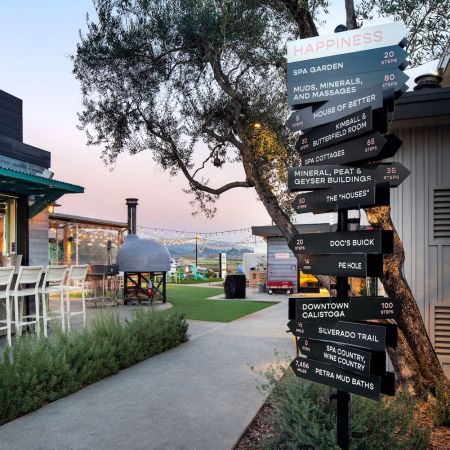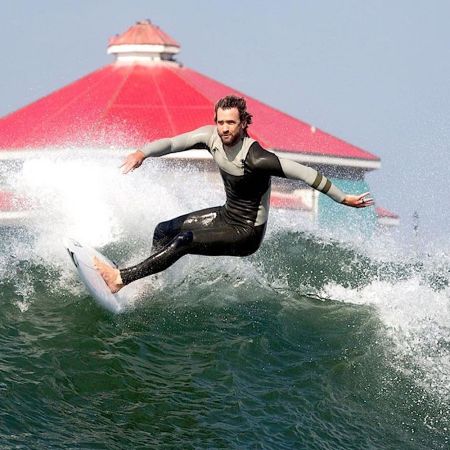The Sierra Nevada mountain range doesn’t have to try hard to draw crowds: well-known paths like the Pacific Crest Trail and the John Muir welcome thousands of backpackers each year. But the off-trail wonders have remained especially mysterious, and harder to access, for many hikers — until now. The new Sierra Grand Traverse guidebook defines a new and remote route through its granite peaks.
“Our hope is to inspire people who do track walking to get off the track and explore more of the wilderness,” says John Chapman, the 69-year-old veteran hiker who co-wrote the guidebook with his wife, Monica. The Australian couple has chronicled their bushwhacking adventures in the Tasmanian Mountains in several guidebooks, but this is their first U.S. offering. It took three years of research, and the result is an invaluable resource for adventuresome folks who want to go a bit feral.
Previously, the area lacked a current guidebook. And with lots of scrambling and 41 mountain passes, having accurate information can make or break a trip. With the Chapmans’ guidebook in hand, hikers will find that answering the call of the wild has never been easier. They detail a 200-mile stretch that takes hardcore adventurers up the high route and off the well-trodden tracks of the PCT. Starting in Tuolumne Meadows in Yosemite, it climbs through the High Sierra to Mount Whitney and ends near Lone Pine at Horseshoe Meadows. “You’ll get more of a wilderness experience,” John says. “You’re seeing the prettiest part of the range, with more lake basins and peaks. Day after day, it just keeps on going, with continuous scenery.”
Everything to Do in San Francisco, According to a Pro Concierge
Four Seasons Hotel’s Vanessa Sharkey shares her top spotsThe guidebook is broken up into five parts, each accompanied by practical information the Chapmans deemed essential, chief among them a realistic estimate of the time needed to finish each section. “We were meeting people in the range who would plan a walk that would take a week, but they had to abandon the trip early because it was physically impossible,” John says.
Exploring alpine peaks at 9,000 to 12,000 feet comes with its own set of challenges — once you go off-track at this elevation, everything from your cruising pace to the weather is best regarded as variable. “The reality is it can take four to five hours to do less than one mile at times, and other times it can take half an hour to cross one meadow,” John adds.
When the Chapmans set out in 2019 to explore the Grand Traverse, they pulled inspiration from the research of famous mountaineer Steve Roper, who first documented the area in the late 1970s. “We worked out a high route that didn’t involve ice axes or technical climbing,” John says. “It was such a great walk that we wanted to give it to the hiking community, so we wrote up the book. We’re all there to help each other. We all support each other because we’re there for the same reasons.” Instead of simply copying information off survey maps, the Chapmans drew topographic maps for hikers, spending up to 20 hours on a single one. They also identified the best places to camp, with the lowest environmental impact.
Though the guidebook was written for experienced hikers, John says that with planning and research, even average backpackers can enjoy the rugged wonders of the Range of Light. “The main thing is to keep a flexible itinerary and take your time,” he says. “Once you get thunderclouds building up, be prepared to camp, even if it’s early. People sometimes get caught up in hitting daily mileage goals, but you can always make it up in the next few days. The hike takes up to 21 days, but there’s no correct way of doing it.” Hiking a section at a time is a great way to approach the route, and sections two and five are the easiest places to start, he says.
A record snowpack this year means the ideal time to hike the Sierra Grand Traverse is late in the season, from mid- to late-August, to avoid the dreaded “post-holing” (when you sink deep into soft snow with every step). “This year, you could probably go in early September, but make sure to leave by the second week,” John says. “That’s when the temperature drops noticeably, and water will freeze in your tent.”
More than 150 years ago, John Muir began wandering the Sierra, and today, there’s still plenty to discover. “You can explore and always see new things,” John says. “There’s just so much wilderness.” His guidebook can help get you there.
This article was featured in the InsideHook SF newsletter. Sign up now for more from the Bay Area.
























